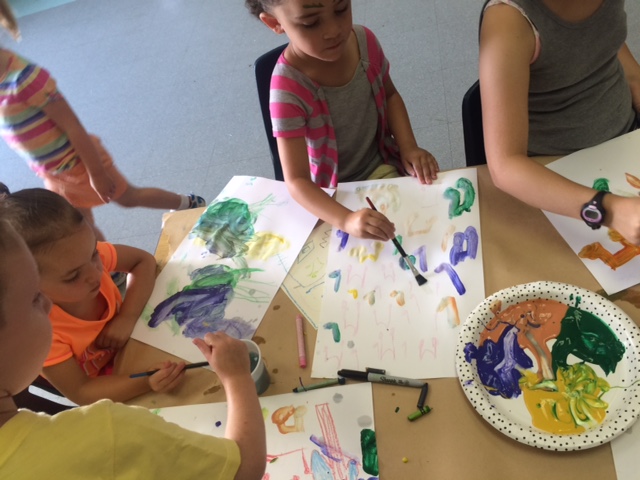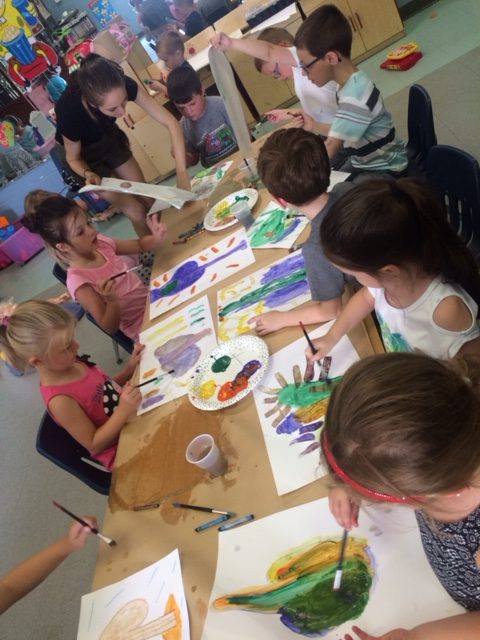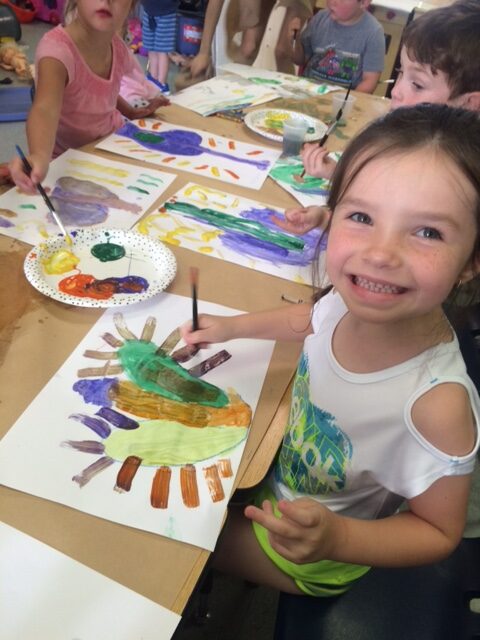
As part of our overarching themes this session, we are aiming to include more music into the lessons for the summer and fall. Incorporating music into our lessons will help students relax and slow their heartbeats while encouraging them to concentrate more easily on the task at hand. Studies show that listening certain types of music stimulates both the left and right hemispheres of the brain, maximizing learning and retention of information. By including different genres of music with introduction of art history, we aim to help our students remember the techniques learned with the association of sound and memory.
We began the lesson with reflecting on a Andrew Turner painting. Andrew Turner was a local artist born in the 1940s, when “Dixieland” jazz was taking the U.S. by storm, and brought us hits by Thelonious Monk, Duke Ellington, and Louis Armstrong. Turner’s paintings are a terrific example of how powerful color and line are to the mood of the image. Our students took a look at his painting and could determine that the space was dark, moody, possibly loud, and possibly packed with patrons.
As a warm up to the painting, we used line to express mood and sound. What lines look happy? Sad? Quiet? Loud?
These lines helped to express what would be going on in our instrument paintings, to create feelings of sound or mood to our viewers.
Students also had fun identifying what instruments they could hear in the Jazz mix I provided for class time. We had a relaxing time listening to the sounds of Ray Charles, Art Blakey, Billie Holiday and Lou Donaldson.
Everyone was excited to share what types of music they listened to at home or in the car or public transportation. Some of the students shared that they also play instruments or have someone at home that plays as well.
Andrew Turner Jazz Paintings
- Demonstrate: Introduction of Jazz, Creating shapes and color patterns, and introduce new ways to make art involving music. Explore music history of Philadelphia and help to identify the types of instruments used.
- Materials: Radio, large format paper, crayons, oil pastels, paint
- Provide heavy weight paper for students to use. Instruct them to warm up with making lines. Scribbling and repetition is encouraged. Moving on to our paintings, students were instructed to create an instrument (most agreed on piano/keyboard or guitar) to represent sound and mood lines used in paintings to demonstrate feelings from the jazz music.
Students were also encouraged to fill the entire paper with color, not to let the white space distract from their beautiful creations.



